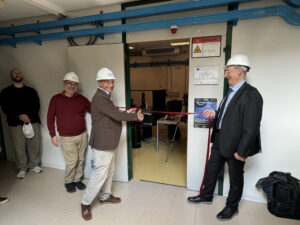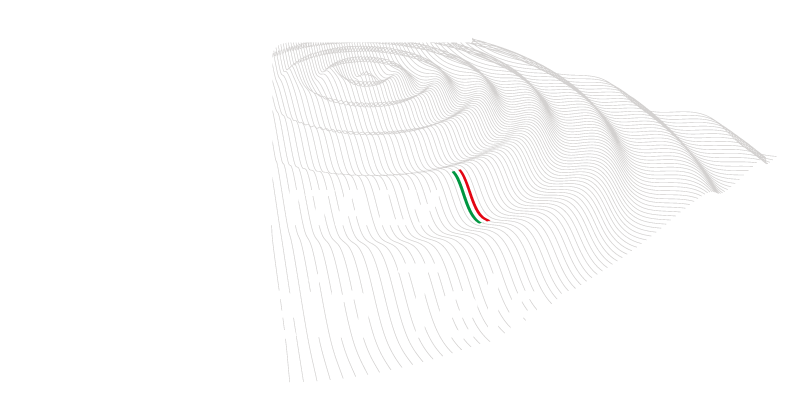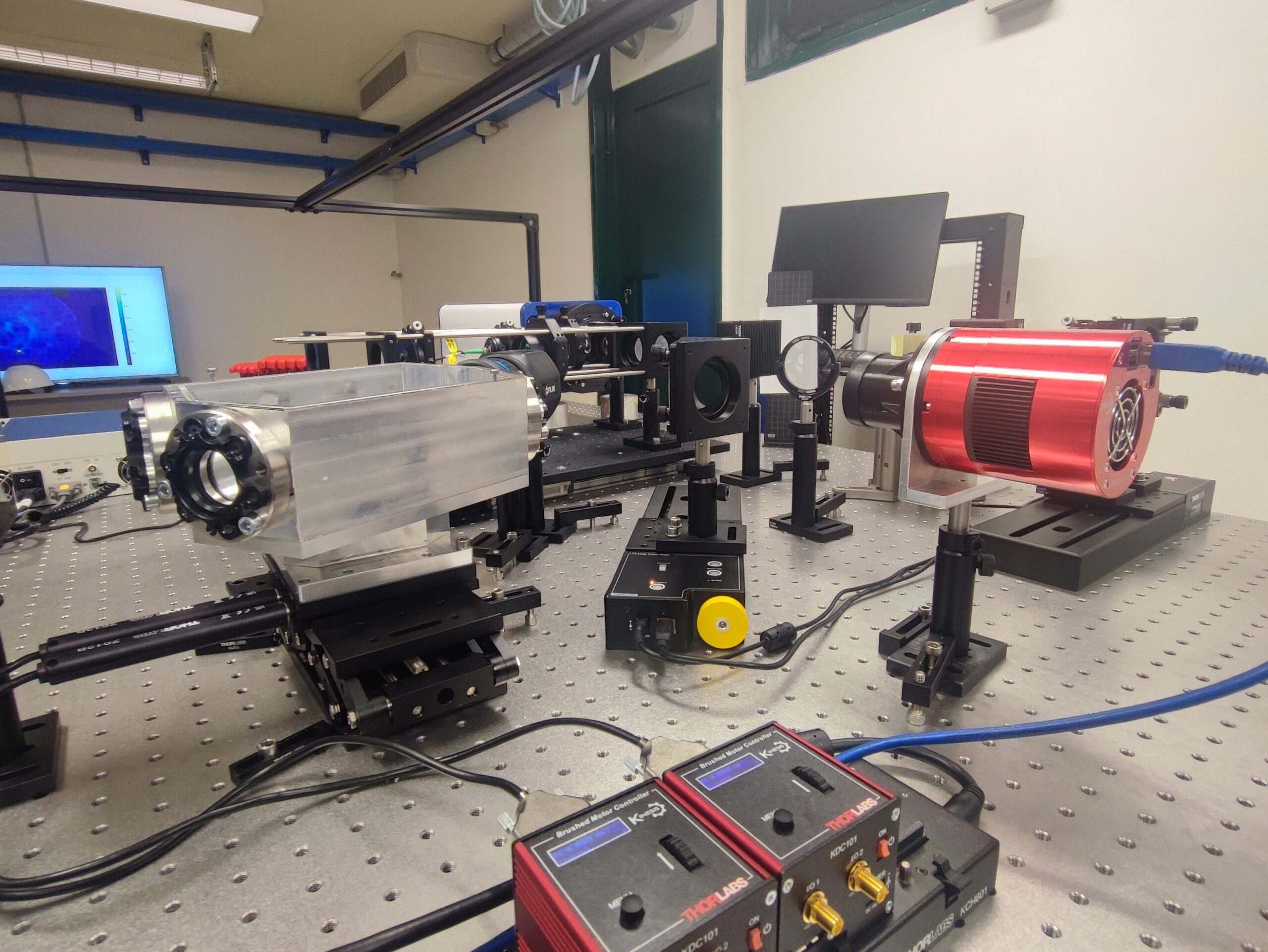On Tuesday, May 13, within the framework of the NRRP ETIC (Einstein Telescope Infrastructure Consortium) project, the ADONI-ET adaptive optics laboratory was inaugurated at the Arcetri Astrophysical Observatory, the Florentine headquarters of the Italian National Institute for Astrophysics (INAF).
The inaugural event began with institutional greetings from Simone Esposito, Director of INAF Arcetri, and Giovanni Passaleva, Director of the Florence section of the National Institute for Nuclear Physics (INFN). Following this, before the traditional ribbon-cutting ceremony, Michele Punturo, scientific coordinator of the ETIC project and international head of Einstein Telescope (ET), and Armando Riccardi, head of ADONI-ET, explained the challenges of the ET project and the new adaptive optics laboratory, respectively.
The creation of the ADONI-ET laboratory is part of the ETIC project, funded by the Ministry of University and Research (MUR) under Mission 4 of the National Recovery and Resilience Plan (NRRP), led by INFN.
INAF is participating in the NRRP ETIC project through its national adaptive optics laboratory, ADONI, which is dedicated to transferring adaptive optics technologies developed for optical telescopes to other scientific fields.
In the field of gravitational wave interferometers like the Einstein Telescope, the ADONI-ET lab is focused on developing an innovative concept for mirror correction using infrared beams to control the shape of a corrective element by local heating. The system is designed to operate in a closed loop, adjusting the local heating using information from a measurement channel that verifies the actual shape of the mirrors to be controlled.

The traditional ribbon cutting at the inaugural event.
«The laboratory, designed and built thanks to NRRP-ETIC funding, stems from the solid expertise of INAF and its ADONI lab, which is a national and international reference point in adaptive optics for astronomical applications», said Simone Esposito, Director of INAF Arcetri. «The techniques developed in this field are now being applied to the control of optical beams in gravitational wave interferometers. The NRRP-ETIC program has given a major boost to the multidisciplinary development of adaptive optics, extending its use to cutting-edge scientific instruments like gravitational wave detectors».
«As director of the INFN Florence section, I am particularly pleased and proud to see the start of activities at the ETIC-ADONI lab at the Arcetri Observatory. ETIC-ADONI was funded as part of the NRRP ETIC project, led by INFN, which focuses on the feasibility study and characterization of the Italian candidate site to host the Einstein Telescope, and the creation of a network of research laboratories for the development of the technologies that will be adopted by the new gravitational observatory, involving many Italian universities and research institutions, including INAF», added Giovanni Passaleva, Director of INFN Florence. «INAF is a key partner in this effort, and through the ETIC-ADONI lab, it will play a central role by applying its outstanding expertise in adaptive optics to gravitational wave research. This marks another milestone in the excellence of Florentine research, with INFN and INAF collaborating on one of the most important and revolutionary scientific projects of the coming decades, on the historic Arcetri hill that once hosted giants of science like Galileo, Fermi, Occhialini, Hack, and Pacini».
«The signals produced by gravitational waves are so faint that they require instruments perfectly isolated and free of optical distortions toavoid the effects of such “imperfections” drastically reduce the sensitivity of detection. This is especially true for the Einstein Telescope, which aims to increase sensitivity by an order of magnitude compared to current detectors (LIGO, Virgo), demanding innovative control solutions. In particular, any deviation of the optical elements from their ideal shape, whether due to manufacturing imperfections or thermal deformation, must be corrected. Adaptive optics serves precisely this purpose: introducing a corrective element in the system to compensate for such distortions in real time», explained Armando Riccardi, head of ADONI-ET. «The ADONI-ET lab at Arcetri aims to transfer INAF’s extensive expertise in adaptive optics, originally developed to counteract atmospheric turbulence in astronomy, to the Einstein Telescope. Specifically, in the laboratory we are developing and will test the ability of a deformable mirror to modulate the light from a high-power laser to vary the temperature map of an optic to be used as a corrector element of ET measurement beams (compensation plate) and verify that the wavefront distortions obtained are in agreement with the accuracies required by this formidable instrument for gravitational wave detection».
With this ADONI lab project, INAF is a concrete candidate to contribute to the development of an adaptive system for ET also by training young researchers.
The ETIC consortium is made up of fourteen Italian universities and research institutions, with the goal of supporting Italy’s candidacy to host the next-generation gravitational wave observatory, the Einstein Telescope, one of the most ambitious research infrastructures to be built in Europe in the coming decades, and included in the ESFRI roadmap (European Strategy Forum on Research Infrastructures), the body that indicates which scientific infrastructures it is crucial to invest in in Europe.
With a total investment of €50 million, ETIC is focusing both on characterizing the proposed site for the ET – located near the disused Sos Enattos mine in Sardinia – and on developing and enhancing a national network of research laboratories to support the technologies that will be adopted by the new gravitational observatory.

